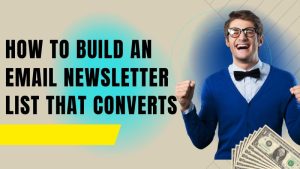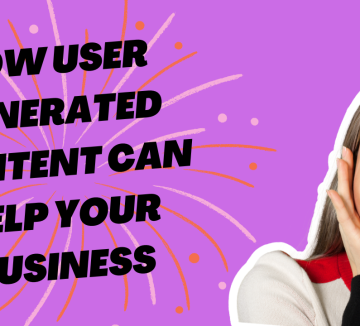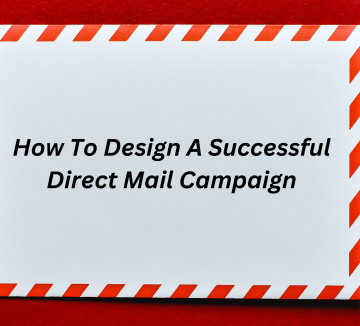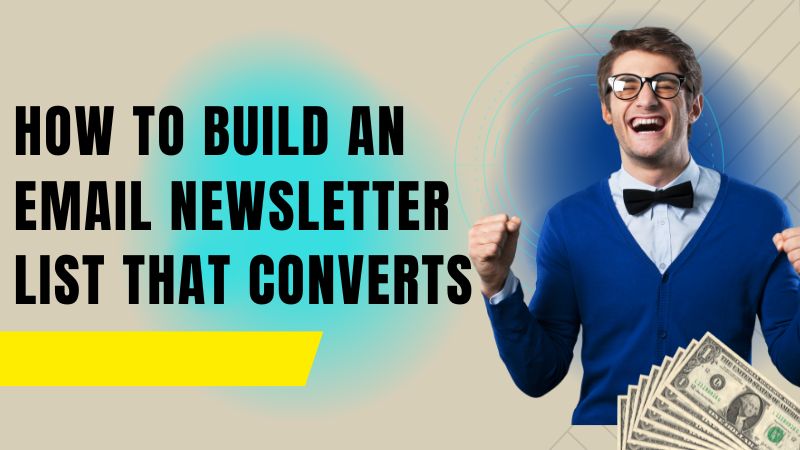Last Updated on April 13, 2023 by David
Email newsletter list building is critical to any successful email marketing strategy.
Building an email newsletter list should be a top priority if you want to grow your business and increase your online presence.
An email list provides a direct line of communication with your audience, allowing you to promote your products, services, and brand to a targeted group of people.
However, building an email newsletter list that converts takes more than just collecting email addresses.
You need to create a list of engaged and interested subscribers willing to act on your emails.
This article will explore how to build an email newsletter list that converts.
I will cover topics such as setting goals for your list, understanding your target audience, creating engaging content, using lead magnets to attract subscribers, and segmenting your list for better results.
In addition, I will provide best practices for email design, timing your emails, crafting effective subject lines, and using social media to grow your list.
Whether new to email marketing or looking to improve your current strategy, this article will provide valuable insights and tips for building an email newsletter list that converts.
You may also read the following:
- How To Maximize Email Deliverability: The Insider’s Guide
- The Power of Email Segmentation: How to Boost Your Campaigns
- Top 10 Email Marketing Automation Tools for Successful Campaigns
Let’s dive in!
Setting Goals for Your Email Newsletter List
Goal setting involves defining specific objectives and targets you want to achieve with your list.
With clear goals, measuring your progress and optimizing your efforts is easier.
Setting goals is essential for email newsletter list building success for several reasons:
- Provides a clear direction for your efforts
Goal setting provides a clear direction for your efforts, allowing you to focus on the most important tasks.
Setting goals helps you define what you want to achieve with your email list, which provides a clear direction for your efforts.
Without clear goals, you may end up focusing on tasks that aren’t as important or impactful for your list.
For example, if your goal is to increase your email list engagement, you may prioritize creating more engaging content, improving your subject lines, or optimizing your email design, rather than focusing on less impactful tasks such as increasing the number of subscribers.
- Helps you measure your progress and optimize your strategy
Setting goals helps you measure your progress and optimize your strategy over time.
By setting measurable goals, you can track your progress and measure the impact of your efforts over time.
This helps you optimize your email marketing strategy and make data-driven decisions.
For example, if your goal is to increase your list’s engagement, you can track your open rates, click-through rates, and other metrics to see how well your strategy is working.
You can then adjust your tactics or try new strategies to improve your results.
- Provides motivation and accountability for your efforts
Setting goals provides motivation and accountability for your email marketing efforts.
It helps you stay focused on what you want to achieve and encourages you to take action towards your objectives.
For example, if your goal is to grow your list by 20% in the next six months, you’ll be motivated to try different tactics to achieve that goal, such as offering lead magnets, promoting your list on social media, or optimizing your opt-in forms.
Additionally, by setting a specific and time-bound goal, you’ll be more accountable for your efforts and more likely to take action toward achieving it.
What Kind of Goals Should You Set for Your Email Newsletter List?
When setting goals for your email newsletter list, it’s important to focus on specific, measurable, achievable, relevant, and time-bound objectives.
Here are some examples of goals you might set for your email list:
- Growing your email newsletter list: Set a goal to increase the size of your email list by a specific number or percentage over a set period.
- Increase engagement: Set a goal to improve your open rates, click-through rates, or other engagement metrics.
- Drive conversions: Set a goal to increase your sales or other conversions from your email list.
- Reduce churn: Set a goal to reduce your unsubscribe rate or improve your list retention over time.
- Segment your list: Set a goal to create targeted segments of your list based on shared characteristics, such as interests or behaviors.
Setting specific and measurable goals for your email list allows you to optimize your efforts and achieve better results over time.
Remember to track your progress regularly and adjust your strategy based on your results.
Understanding Your Target Audience
Another critical step in building an email newsletter list that converts is understanding your target audience.
Your audience is the group of people that you want to attract and engage with your email marketing efforts.
With a deep understanding of your audience, creating content that resonates with them, drives conversions, and builds loyalty is much easier.
- Who are they?
Start by asking yourself who your target audience is. What demographics do they fall into, such as age, gender, income, and location?
What are their interests and hobbies? What challenges or pain points do they face that your product or service can solve?
By answering these questions, you can create a clearer picture of who your ideal subscriber is.
- What are their interests?
Once you understand your target audience, it’s time to dive deeper into their interests. What do they like to read, watch, or listen to?
What social media platforms do they use? What topics are they passionate about?
By understanding their interests, you can create content that speaks directly to them and builds a deeper connection.
- What motivates them?
Finally, it’s essential to understand what motivates your audience. What are their goals and aspirations?
What challenges do they face, and how can your product or service help them overcome them?
By understanding their motivations, you can craft messages that resonate with them on a deeper level and drive action.
- Creating Customer Personas
Customer personas are fictional representations of your ideal subscribers based on research and data.
They help you create a more detailed and nuanced understanding of your audience and tailor your messages to their needs.
To create customer personas, start by analyzing your existing subscriber data and conducting surveys or interviews with your audience.
Then, use that information to create a profile of your ideal subscriber, including their demographics, interests, motivations, and pain points.
- Tailoring Your Messages to Your Audience
Once you deeply understand your audience, you can tailor your messages to their needs and interests.
Use the information you’ve gathered to create content that speaks directly to them, using language, tone, and imagery that resonates with their preferences.
Doing so will build a stronger connection with your audience, increase engagement, and drive conversions.
Understanding your target audience is critical in building an email newsletter list that converts.
Creating customer personas and tailoring your messages to your audience’s needs and interests can build a deeper connection, increase engagement, and drive conversions.
Remember to regularly review and update your customer personas based on new data and feedback to ensure that you continue to connect with your audience over time.
Perfecting Opt-In Form For Email Newsletter List
Your opt-in form is the gateway to your list and the first thing your potential subscribers will see.
Therefore, ensuring your opt-in form is well-designed, compelling, and effective is crucial.
This section will explore the best practices for creating opt-in forms to attract and convert subscribers.
- Keep the Opt-In Form Simple
One of the best practices for creating an effective opt-in form is to keep it simple.
A cluttered and confusing form can overwhelm potential subscribers and deter them from signing up.
Therefore, focus on the essential elements and keep the design clean and straightforward.
The essential elements of a simple email newsletter list opt-in form are a clear headline, minimal form fields, a direct call-to-action, an incentive, a privacy policy, and an attractive design.
For example, you may want to consider using a single-column layout and limiting the number of form fields to the bare minimum.
- Using Clear Language
Another best practice for creating an effective opt-in form is to use clear and concise language.
Your form should clearly communicate what subscribers can expect from your emails and what they need to do to sign up.
Avoid using industry jargon or technical terms that may confuse potential subscribers.
Instead, use simple and understandable language that makes it easy for them to sign up.
- Offering Incentives
Offering an incentive is a great way to increase the effectiveness of your opt-in form.
Incentives can be anything that provides value to your potential subscribers, such as a discount, a free trial, or an exclusive piece of content.
Offering an incentive can encourage potential subscribers to sign up and increase their chances of becoming engaged and loyal subscribers.
Creating an effective opt-in form is crucial for building an email newsletter list that converts.
To create an effective opt-in form, it’s important to keep it simple, use clear language, and offer incentives.
Following these best practices, you can create an opt-in form that attracts and converts subscribers and helps you grow your email newsletter list.
Remember to test your opt-in form regularly and refine your approach based on your results to ensure the best possible outcomes.
Lead Magnets that Grow Email Newsletter List
Lead magnets are free resources you offer potential subscribers in exchange for their email addresses.
They can take many forms, such as ebooks, whitepapers, checklists, webinars, or video tutorials, and provide value to your audience and encourage them to join your email list.
Best practices for creating lead magnets include making them valuable and relevant to your audience.
This means understanding the needs and interests of your target audience and creating a lead magnet that solves a specific problem or provides a unique benefit.
For example, if you’re in the fitness industry, you might offer a free workout plan or a nutrition guide.
If you’re in the finance industry, you might offer a free budgeting template or a guide to investing.
When creating lead magnets, it’s important to keep them visually appealing and easy to consume.
Use high-quality images, clear formatting, and a clean design to make your lead magnet look professional and attractive.
Ensure that your lead magnet aligns with your brand and messaging, which will help build trust with your audience.
Use opt-in forms on your website and social media profiles to promote your lead magnet and attract subscribers.
Ensure that your opt-in forms are well-designed and prominently displayed so visitors can easily see them.
Also, use targeted messaging and calls-to-action that highlight the value of your lead magnet and encourage visitors to subscribe.
Overall, lead magnets are a powerful tool for building an email newsletter list that converts.
Creating valuable and relevant resources that solve a specific problem or benefit your audience uniquely can attract more subscribers and build a more engaged email list.
Remember to keep your lead magnets visually appealing and easy to consume, and promote them using well-designed opt-in forms and targeted messaging.
Following these best practices, you can create lead magnets that drive conversions and help grow your email list.
Creating Engaging Newsletter Content
Engaging newsletter content is essential to keeping your subscribers interested and active.
Your newsletter content should be valuable, interesting, and relevant to your audience.
Here are the best practices for creating engaging newsletter content that converts your subscribers into loyal customers.
- Using a Conversational Tone
One of the best ways to make your newsletter content engaging is by using a conversational tone.
Your subscribers want to feel like they are hearing from a real person, not a robot.
Using a conversational tone, you can make your newsletter content more relatable and accessible.
Avoid using overly formal language or jargon that may confuse or alienate your audience.
- Focusing on the Benefits to Your Audience
Another important aspect of creating engaging newsletter content is focusing on the benefits to your audience.
Your subscribers want to know what’s in it for them.
Highlight how your content can help them solve a problem or achieve a goal.
By focusing on the benefits to your audience, you can make your newsletter content more compelling and valuable.
- Using Multimedia Elements
Using multimedia elements such as images, videos, and GIFs can make your newsletter content more visually appealing and engaging.
Visuals can help break up text and add interest to your content.
They can also help illustrate concepts or ideas that may be difficult to explain in words. Be sure to use high-quality visuals relevant to your content and brand.
- Including Call-to-Actions
Including a call-to-action (CTA) in your newsletter content can encourage your subscribers to take action.
A CTA can be anything from signing up for a webinar to purchasing a product.
Including a CTA in your newsletter content can guide your subscribers toward the next step in their journey with your brand.
Creating engaging newsletter content is critical to building an email newsletter list that converts.
Using a conversational tone, focusing on the benefits to your audience, using multimedia elements, and including call-to-actions are all best practices for creating engaging content.
By following these best practices, you can keep your subscribers interested and active and ultimately convert them into loyal customers.
Segmenting Your Newsletter Email List for Better Results
Segmenting your email newsletter list is crucial in creating a successful email marketing strategy.
It involves dividing your list of subscribers into smaller groups based on shared characteristics.
By doing this, you can send more targeted messages to your subscribers, increasing engagement and ultimately boosting conversions. Here’s how to effectively segment your list:
- Using Relevant Criteria
When segmenting your list, using relevant criteria to ensure your segments are meaningful and effective.
Relevant criteria might include demographics such as age, gender, location, or more behavioral criteria such as past purchases, email engagement, or website activity.
Using relevant criteria, you can ensure that your segments are truly different and that your messaging resonates with each segment.
- Creating a Hierarchy of Segments
Creating a hierarchy of segments involves organizing your segments in a logical order of importance.
For example, you might have a primary segment of subscribers who have made a recent purchase, followed by a secondary segment of subscribers who have engaged with your emails but have yet to make a purchase.
By creating a hierarchy of segments, you can ensure that your messaging is prioritized and that you’re focusing your efforts on the most important segments.
- Testing Different Segments
Testing different segments involves experimenting with different segment criteria and messaging to see what works best for your audience.
For example, you might test different subject lines or calls-to-action with different segments to see which ones perform the best.
By testing different segments, you can optimize your messaging and ensure you deliver the right message to the right audience.
Crafting Effective Subject Lines
Subject lines are the first thing your subscribers will see when they receive your email, and they’re responsible for getting your message opened and read.
Effective subject lines are essential for building an email newsletter list that converts. Here are important tips
Checkout My Guide on Marketing Email Subject Lines – The Secret To Successful Campaigns
- Keeping Them Short and Sweet
Your subject lines should be short and sweet, ideally under 50 characters. This ensures that they’re visible to most email clients and mobile devices.
A shorter subject line also makes it easier to read and understand, increasing the chances that your subscribers will open your email.
For example, instead of using a long subject line like “The Ultimate Guide to Building a Successful Email Newsletter List,” you could use a shorter, more concise version like “Build Your Email List Like a Pro.”
- Using Action-Oriented Language
Using action-oriented language in your subject lines can make them more compelling and increase open rates.
Action-oriented language encourages your subscribers to take action and engage with your email.
For example, subject lines like “Don’t Miss Out on This Exclusive Offer” or “Limited Time Only: Save Big Today” can motivate subscribers to open your email and take advantage of the offer.
- Personalizing Email Subject Lines
Personalizing your subject lines can increase open rates and improve engagement.
Using your subscriber’s name or other relevant information can make your emails more relevant and personalized.
For example, instead of using a generic subject line like “New Product Announcement,” you could use a personalized subject line like “John, Check Out Our New Product Line.”
In summary, crafting effective subject lines is critical for building an email newsletter list that converts.
Best practices for creating effective subject lines include keeping them short and sweet, using action-oriented language, and personalizing them.
Following these best practices can increase your open rates, improve engagement, and ultimately drive conversions from your email list.
Best Practices for Email Design:
Email design is critical in engaging your subscribers and encouraging them to take action.
When it comes to designing your emails, there are several best practices that you should follow to create effective and engaging content.
Firstly, using a clean and simple layout is key to making your emails easy to read and visually appealing.
A cluttered layout can be overwhelming for your subscribers and may result in them losing interest in your content.
Top 5 Email Design Trends to Try Now – Stand Out Today!
A simple and organized layout, on the other hand, can make it easier for your subscribers to understand your message and take action.
Using images and graphics effectively is another important aspect of email design.
Visual content can be a powerful way to capture your subscribers’ attention and make your emails more engaging.
However, it’s important to use images and graphics strategically and in a way that supports your message.
Too many images or irrelevant visuals can distract from your message and reduce the impact of your email.
Making your calls to action clear and prominent is also critical to encouraging your subscribers to take action.
Your calls-to-action should be easy to understand and visually prominent, so that they stand out in your email.
This could include using contrasting colors, bolding text, or adding buttons or icons to make your calls-to-action more visually appealing.
In addition to these best practices, there are several other design elements that you should consider when building your email newsletter list.
These include using a consistent branding style, ensuring your emails are mobile-friendly, and personalizing your content for your subscribers.
Email design is a critical component of building an email newsletter list that converts.
By following best practices for email design, you can create engaging and effective content that encourages your subscribers to take action.
Remember to use a clean and simple layout, use images and graphics effectively, and make your calls-to-action clear and prominent.
With the right design elements in place, you can maximize the impact of your email marketing efforts and achieve better results from your email list.
Conclusion
In conclusion, building an email newsletter list that converts is a powerful tool for growing your business and increasing your online presence.
By following the best practices for list building, segmenting, content creation, and analytics, you can create a list that delivers results for your business.
Remember to focus on providing value to your subscribers by creating engaging content, offering lead magnets, and crafting persuasive copy.
Testing your strategies and refining your approach over time is critical for optimizing your results and improving your conversion rates.
Segmenting your list based on shared characteristics and interests is also important for sending more targeted messages and increasing engagement.
Utilize email design, subject lines, and timing best practices to maximize engagement and conversions.
Social media can also be valuable for promoting your list, engaging with your audience, and driving sign-ups.
Analytics is essential for measuring your progress, refining your strategy, and optimizing your email marketing results.
Regularly clean and maintain your list to ensure that your subscribers are engaged and interested in your content.
Lastly, avoid common mistakes such as sending too many emails, not targeting your messages effectively, and not providing value to your subscribers.
In summary, building an email newsletter list that converts takes time, effort, and a deep understanding of your audience.
By following the best practices and tips outlined in this article, you can create a list that delivers results for your business.
Remember to focus on providing value, testing your strategies, and refining your approach over time to improve your email marketing results continuously.
Begin by identifying your target audience and creating valuable content that aligns with their interests. Use opt-in forms on your website and social media to collect email addresses.
Focus on providing value to your subscribers by offering informative, relevant, and engaging content. Incorporate visuals, use a conversational tone, and personalize your emails to establish a connection with your audience.
Offer exclusive content, such as ebooks or discounts, in exchange for email sign-ups. Utilize pop-up forms, contests, and lead magnets to encourage visitors to subscribe to your newsletter.
Include clear and compelling call-to-action (CTA) buttons or links in your newsletters. Make the CTA stand out, use persuasive language, and create a sense of urgency to encourage your subscribers to take action.
Track key metrics such as open rates, click-through rates, conversions, and unsubscribe rates. Analyze the data, identify patterns, and make data-driven decisions to optimize your email newsletter strategy for better results.




